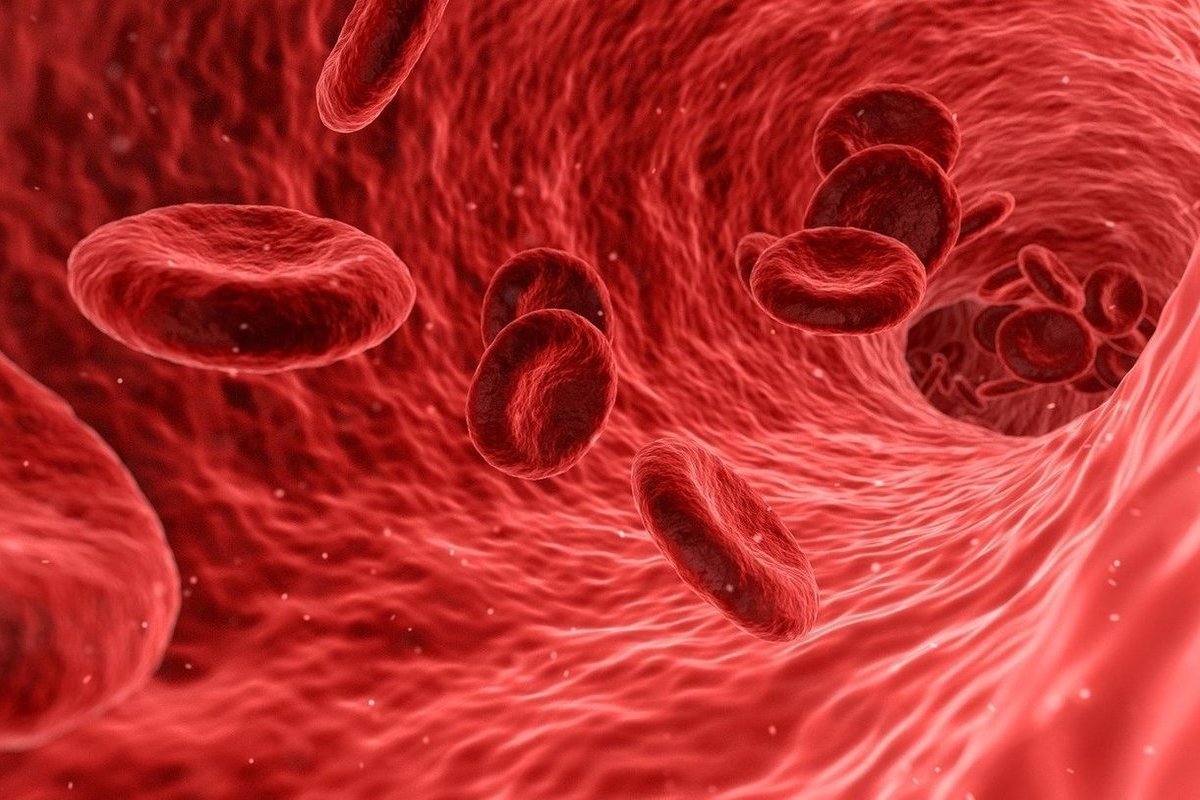Last Updated on November 14, 2025 by
We are seeing big steps forward in treating blood cancer. This term covers diseases like leukemia, lymphoma, and multiple myeloma. Whether blood cancer can be cured for good is a tough question. It depends on the cancer type and how well treatment works.

New medical discoveries have helped more people live longer and recover better. But, the path to getting better is tough. It’s key for patients and their families to know about the symptoms and treatment choices.
We will look into if blood cancer can be cured. We’ll focus on multiple myeloma symptoms and the latest in treatment results. This will give a full picture for people looking for healthcare around the world.
Blood cancer is not just one disease. It’s a group of conditions that affect the blood and bone marrow. There are several types, each with its own traits and effects on the body. The main types are myeloma, lymphoma, and leukemia.

Leukemia, lymphoma, and myeloma are the main blood cancers. Leukemia happens when white blood cells grow too much in the bone marrow. This weakens the immune system.
Lymphomastarts in the lymphatic system. It makes lymphocytes turn cancerous and build up in lymph nodes. This can cause swollen lymph nodes.Myeloma, or multiple myeloma, affects plasma cells in the bone marrow. It can cause bone pain and increase the risk of fractures.
“The differences between these cancers are significant,” says a hematologist. “Knowing these differences is key to finding the right treatment for each type.”
Blood cancers start with DNA mutations in blood cells. This leads to uncontrolled growth and cancerous cells. In leukemia, these cells take over the bone marrow, stopping it from making healthy blood cells.
Lymphoma happens when cancerous lymphocytes build up in lymph nodes and other lymphoid tissues. This can spread to other parts of the body. Myeloma occurs when plasma cells turn cancerous. They produce abnormal proteins that can harm the kidneys and other organs.
How fast blood cancer progresses can vary a lot. It depends on the type of cancer, genetic mutations, and overall health. Knowing how these cancers grow is key to creating effective treatment plans.
By understanding each type of blood cancer, doctors can give more targeted treatments. As research improves, we’ll learn more about these diseases. This will help us find better treatments.
It’s important to know the symptoms of multiple myeloma early. This disease makes the bone marrow grow cancerous cells. This leads to many symptoms all over the body.
Bone pain is a common symptom of multiple myeloma. It happens when cancer cells destroy bone tissue. This can cause:
These problems can really affect a person’s life. It’s key to take care of bone health when treating the disease.

Many patients with multiple myeloma feel tired and weak. This is often because of anemia. Anemia happens when cancer cells take over the bone marrow. Other blood issues include:
These problems can make it harder to fight off infections and stop bleeding. So, it’s important to watch these closely and provide support.
Multiple myeloma can also harm the kidneys. This can cause:
Patients might also have other symptoms like weight loss, night sweats, and infections. These symptoms can be hard to spot because they can look like other diseases.
Spotting these symptoms early is key to getting the right treatment. Understanding multiple myeloma helps doctors give better care to patients.
It’s important to know what a “cure” means in blood cancer. This term can be tricky, mainly in cases like leukemia, lymphoma, and multiple myeloma.
When we talk about a “cure,” we’re looking at how well treatments work. We want to know if someone can live long without the disease coming back. But, what a “cure” means can change based on the cancer type and treatment used.
In blood cancer treatment, we talk about complete remission and functional cure. Complete remission means no cancer is found in the body after treatment. A functional cure means the cancer is controlled, and the patient can live a normal life without disease signs.
Chemotherapy is a common treatment for blood cancers like multiple myeloma. It can work well, but it’s important to know its side effects. Knowing if chemo is working or if it’s harming you is key to adjusting treatment.
For a long time, we used the 5-year survival rate to measure cancer treatment success. But, this doesn’t fully show how well treatments work for blood cancers. Now, we look at other factors too, like:
These measures give a better picture of how well treatments work and what the future holds for patients. For example, in multiple myeloma, chemotherapy for multiple myeloma can greatly improve survival when used with other treatments.
Knowing what causes blood cancers, like what causes leukemia, helps us make better treatments. This knowledge is key to improving patient outcomes.
Survival rates for blood cancer show a mix of good news and challenges. Some types have seen big improvements, thanks to new treatments. But, the journey to recovery varies a lot, depending on the cancer type and the patient’s age.
Leukemia, a cancer of the blood and bone marrow, has seen big changes in survival rates. The five-year survival rate for leukemia patients can range from as low as 24% for certain acute types to over 70% for others. This depends on age and specific leukemia characteristics.
For example, acute lymphoblastic leukemia (ALL), the most common type in kids, has made huge strides. Cure rates for kids with ALL are now over 90%.
Lymphoma, another major blood cancer, includes different subtypes like Hodgkin lymphoma and non-Hodgkin lymphoma. Survival rates for lymphoma have gotten better, with Hodgkin lymphoma having a high cure rate if caught early. Non-Hodgkin lymphoma survival rates vary more, depending on the subtype and stage at diagnosis.
Multiple myeloma, a cancer of plasma cells in the bone marrow, is tough to treat. Survival rates have improved with new treatments like targeted therapies and immunotherapies. But, the prognosis can vary a lot, based on genetic abnormalities and how well the patient responds to treatment.
Early diagnosis and access to new treatments are key for better outcomes in multiple myeloma patients.
In conclusion, while there have been big steps forward in treating blood cancers, leading to better survival rates for many, there’s more work to do. We need to keep researching and innovating to tackle the challenges that remain, for certain subtypes and age groups.
Blood cancer treatment now includes many options, giving patients new hope. The right treatment depends on the cancer type, stage, and the patient’s health.
Chemotherapy is key in treating blood cancers, like multiple myeloma. It uses drugs to kill cancer cells. For multiple myeloma, chemotherapy is often combined with other treatments.
Radiation therapy uses high-energy rays to kill cancer cells. It helps relieve symptoms like bone pain from bone marrow tumors.
Stem cell transplantation is a major treatment for many blood cancers. There are two types: autologous and allogeneic. Autologous uses the patient’s own stem cells, while allogeneic uses a donor’s. The choice depends on the patient’s condition and donor availability.
New treatments are changing blood cancer care. Precision medicine tailors treatment to each patient’s cancer. Targeted therapies focus on specific cancer molecules, showing great promise in treating blood cancers, including multiple myeloma.
These new methods are being tested in clinical trials. They offer hope for better treatment outcomes and quality of life for patients. As research grows, we’ll see more effective and personalized treatments for blood cancer.
Advances in CAR T-cell therapy and immunotherapy are leading the way in finding cures for blood cancer. These new treatments are changing how we fight blood cancer. They bring new hope and better results for patients.
CAR T-cell therapy is a new treatment that changes a patient’s T-cells to fight cancer. This personalized method is showing great promise in treating blood cancers like multiple myeloma and lymphoma.
Immunotherapy is also making big strides. These treatments use the immune system to fight blood cancer more effectively.
Some key immunotherapy methods include:
Multiple myeloma is a tough blood cancer to treat. But, new treatments are being developed to help.
Some promising new treatments include:
It’s important to know why some blood cancers can’t be cured for good. Blood cancers like leukemia, lymphoma, and multiple myeloma are hard to treat. This is because of their complex biology and how differently patients react to treatment.
Cancer stem cells are a special group of cancer cells. They can grow and change like normal stem cells. These cells are believed to start, grow, and come back in blood cancers.
Studies show that these cells can survive treatments, causing cancer to come back. Targeting cancer stem cells is a key area of research. Scientists are looking at new ways to kill these cells.
Genetic changes are key in blood cancers. Some changes make cancer cells resistant to treatment. This makes it hard to cure cancer for good.
For example, changes in genes that help cells live longer can make cancer cells less responsive to treatments. Understanding the genetic landscape of a patient’s cancer is key to finding the best treatment.
The environment around cancer cells affects how the disease grows and responds to treatment. In blood cancers, the bone marrow is a special environment. It protects cancer cells from treatment.
Things like how cells talk to each other, cytokines, and the matrix around cells can help cancer cells survive. By understanding these factors, we can find better ways to treat blood cancers.
This includes targeting cancer stem cells, finding genetic weaknesses, and changing the environment that helps cancer cells live.
We’ve looked into the world of blood cancer, including symptoms of multiple myeloma and leukemia in kids. We’ve seen how far treatments have come. New research and therapies are making a big difference in how we treat blood cancer.
Even with challenges, the progress in treating blood cancer is encouraging. At LIV Hospital, we’re all about top-notch healthcare for international patients. Our goal is to offer the latest treatments and care, aiming for the best results for our patients.
The field of blood cancer treatment is always changing. We’re committed to bettering patient care and outcomes. By leading in medical advancements and tailoring care, we can truly help those fighting blood cancer.
Blood cancer affects the blood, bone marrow, or lymphatic system. It includes leukemia, lymphoma, and myeloma. Each type has its own symptoms and characteristics.
Symptoms of multiple myeloma include bone pain and skeletal issues. Fatigue, weakness, and abnormal blood counts are also common. Kidney problems and other systemic symptoms can occur too.
Blood cancer’s curability depends on the type and stage. A “cure” means the disease is fully controlled. This allows patients to live a normal life.
Survival rates differ for each blood cancer type. Leukemia survival ranges from 24% to 70%. Lymphoma and multiple myeloma outcomes are improving but remain tough challenges.
Treatments include chemotherapy, radiation, and stem cell transplants. New methods like precision medicine and targeted therapies aim to improve results.
CAR T-cell therapy reprograms the immune system to fight cancer. It’s shown promise in treating leukemia and lymphoma, marking a breakthrough in treatment.
Some cancers resist cures due to cancer stem cells, genetic mutations, and microenvironment factors. Understanding these challenges is key to finding better treatments.
New treatments for multiple myeloma include novel agents and immunotherapies. These advancements offer hope for better patient outcomes.
Chemotherapy is a main treatment for blood cancer but has limitations. It can cause side effects and treatment resistance. Finding better strategies is essential.
Subscribe to our e-newsletter to stay informed about the latest innovations in the world of health and exclusive offers!